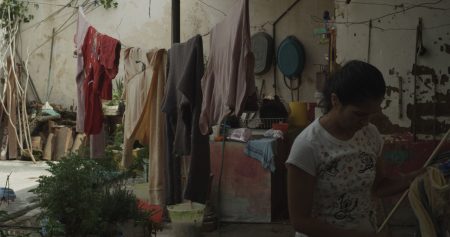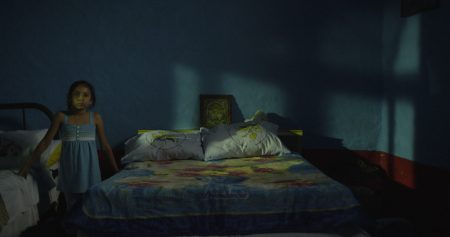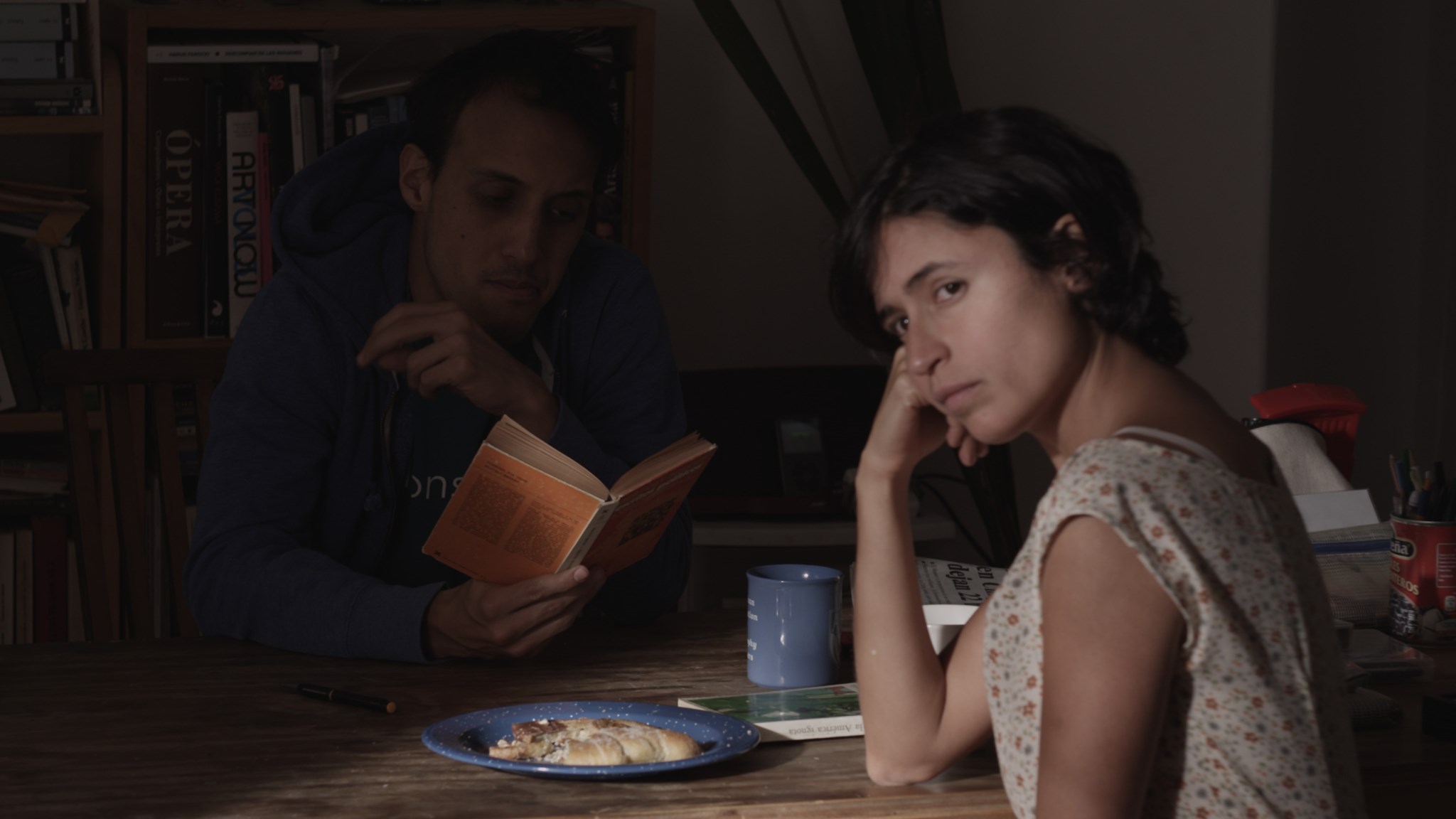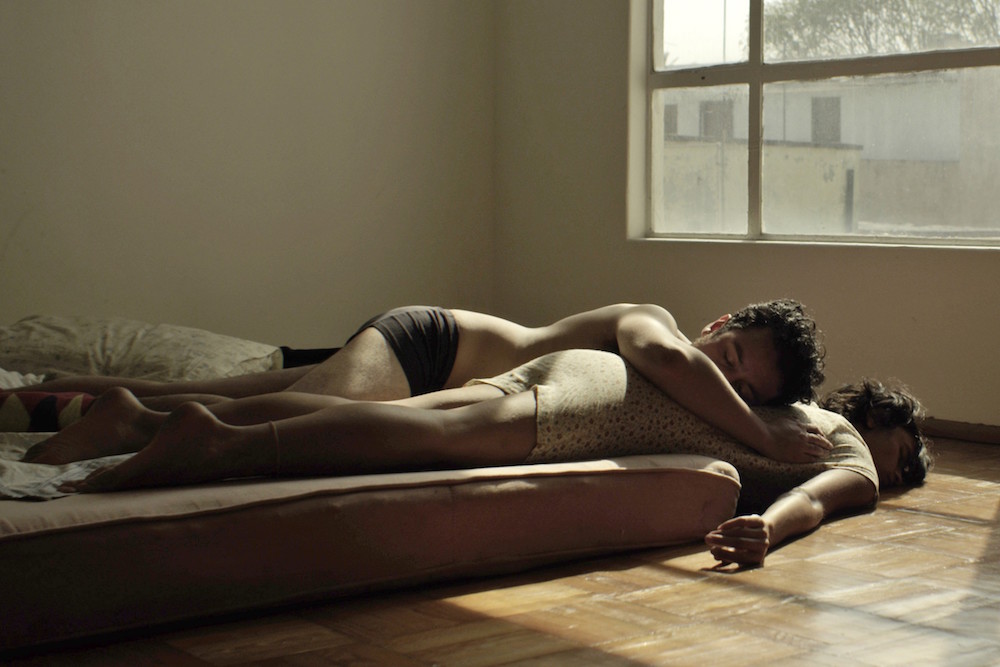We are excited to welcome graduate student Mev Luna to write for us this week. In their essay, Luna reflects on the work of Mexican filmmaker Nicolás Pereda whose films intertwine documentary and narrative to portray everyday life in Mexico.

Nicolas Pereda is a Mexican filmmaker whose films are known for their enigmatic sensibility, minimal dialogue, and beautiful, often drawn out shots. He has directed nine features and three short films including Greatest Hits (2012), Los ausentes (2014) and Summer of Goliath (2010) which will be screened at The Block Museum on October 28th. Filmed in a style evocative of documentary and blurred with fiction, his films poetically unpack issues of class and gender. Minotaur and The Palace pair well together, as they depict subjects from very different socio-economic backgrounds in Mexico.
In El Palacio, or The Palace, a group of intergenerational women live together, waking and sleeping in tandem. This rhythm is established in the opening shot, as the group brushes their teeth over a communal sink; a mundane action rendered as a chorus of repetitive gestures and scrubbing sounds. The camera allows us to stay with them until, one by one, each person has spat, rinsed and left.

As they go about their respective daily chores, we are introduced to another character – a female voice coming from off camera. The voice questions, scolds and sternly informs them of the proper way to engage their task. But she also speaks with concern, taking a protective tone, one that only someone who has also been in the same position could embody. In this way, the film brilliantly captures the more nuanced aspects of power-relations.
Through a series of role-playing interviews toward the end of the film, the voice employs a number of manipulative interrogation tactics. During these interviews, the women are instructed on the subtlety of coded language, directed to alter their answers and mask their own status in false claims, such as reducing the number of children they have. Deflecting the power structure of hired labor, the voice continually refers to a “they” when displeased by the women’s answers. As if “they,” the hypothetical employers, are dictating her demeanor and instructions. Through this process, the women in The Palace are not only being instructed on how to perform domestic tasks, but learning the role of subservient.

By contrast, set in an apartment in Mexico City, Minotaur is a film depicting three young adults and their leisurely lifestyle. The films’ namesake, Minotaur, was a figure in Greek mythology and the cannibalistic offspring of an extramarital affair between Minos’ wife Pasiphaë and the Cretan Bull. To contain Minotaur, Minos commissioned a large labyrinth. As if taking its cue from the creature’s final habitat, the film languidly follows the friends as they lounge, nap, and read in their Mexico City apartment. Books are an important presence in the film, an indulgence indicative of the young intellectual class the actors personify.
Minotaur features Gabino Rodríguez, Luisa Pardo, and Francisco Barreiro from Pereda’s 2009 film, Juntos. These three have a comfortable dynamic, even lying on top of each other as they rest. At one point, Rodríguez falls asleep with a book in his hand and Luisa carefully pries it out, picking up the reading where he left off.

Speaking about the film, Pereda shares that his interest was “in creating a surreal atmosphere, and not a melodrama about class relations.” Indeed, the film is an inverse of lucid dreaming, and there is a sleepiness to this waking state. The film is almost entirely contained to the apartment and soft, natural light spills in through the windows, diffused by curtains or encased by the outline of the window sill. With the exception of when Luisa, book in hand, leans out of the window, her figure almost lost in the direct sunlight and peripheral view of the camera. In the near distance we hear loud construction noises, reminding us that while these three cycle through siestas, the outside world is at work.
One can imagine that includes the seventeen women in The Palace. Each with their own mythos, Pereda’s films stand alone. When screened together, their shared formal investigations of disparate domestic spheres build a complicated and rich relationship to class and the unfolding of time.